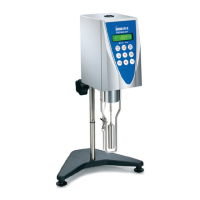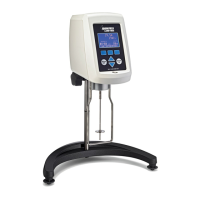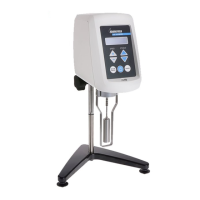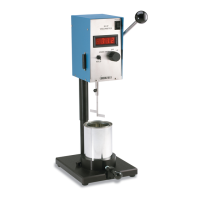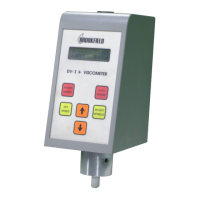Brookeld Engineering Laboratories, Inc. Page 22 Manual No. M00-151-I0614
7) e viscosity reading should equal the cP value on the viscosity uid standard to within the
combined accuracies of the viscometer and the standard (as discussed in the section entitled,
Interpretation of Calibration Test Results). However, instrument accuracy is ±/- of the maximum
viscosity range and not the standard 1%.
Interpretation of Calibration Test Results:
When verifying the calibration of the Viscometer, the instrument and viscosity standard uid error must
be combined to calculate the total allowable error.
e Dial Viscometer is accurate to ± 1% of any full scale spindle/speed viscosity range.
Brookeld Viscosity Standard Fluids are accurate to ± 1% of their stated value.
Example: Calculate the acceptable range of viscosity using RVT with RV-3 Spindle at 2 RPM;
Brookeld Standard Fluid 12,500 with a viscosity of 12,257 cP at 25°C:
1) Refer to the instructions on the FACTOR FINDER. Calculate the full scale viscosity range by
multiplying the spindle/speed FACTOR by 100.
Spindle RV-3, 2 RPM FACTOR = 500
Full scale viscosity range is 500 x 100 = 50,000 cP
e viscosity is accurate to ± 500 cP (which is 1% of 50,000)
Note: All spindle/speed factors found on the FACTOR FINDER are equivalent to 1% of the
spindle/speed full scale viscosity range.
2) e viscosity standard uid is 12,257 cP. Its accuracy is ± 1% of 12,257 or ± 122.57 cP.
3) Total allowable error is 122.57 + 500 cP = ± 622.57 cP.
4) erefore, any viscosity reading between 11,634.4 and 12,879.6 cP indicates that the viscometer
is operating correctly. Any reading outside these limits may indicate a viscometer problem.
Contact the Brookeld technical sales department or your local Brookeld dealer/distributor
with test results to determine the nature of the problem.
Note: Excel Spreadsheet template is available on our website for analyzing calibration
results.
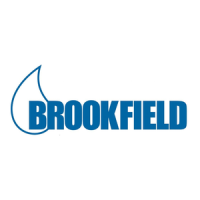
